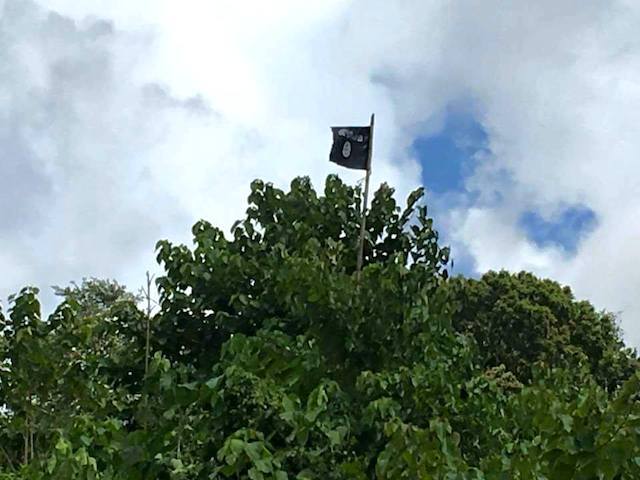From the Wall Street Journal (Nov 27):
First New Fighter Jets to Touch Down in Philippines
Manila is buying 12 FA-50 combat planes amid growing tensions in South China Sea
The Philippines has lacked fighter jets for 10 years, but that situation—which has long embarrassed the military here—is set to end Saturday when two Korean-built FA-50 fighters touch down at Clark Air Base north of Manila.
The planes’ delivery is a milestone in the Southeast Asian country’s efforts to build a “minimum credible deterrent” in the face of growing external threats, notably from China in the hotly contested South China Sea. The Philippines’ neighbors have similar territorial concerns and are also investing heavily in new weaponry.
But Manila’s new air power is only one piece in the complex puzzle of turning its military—depleted after decades of
underinvestment—into a viable force, and security analysts warn that Beijing’s advantage in the South China Sea may be too overwhelming for the Philippines’ new fighters to change the balance of power.
The FA-50s can provide some deterrent, but only if the Philippine government demonstrates that it is serious about using them, said Jose Antonio Custodio, a Philippine defense consultant. So far, “the Philippines has remained passive in its physical protection of its territory,” Mr. Custodio said, noting Manila surrendered Scarborough Shoal, an important fishing ground 100 miles west of the Philippines, to Chinese vessels in 2012. The efficacy of the new planes would depend “on the government’s political will to use the assets”.
But that could mean going toe to toe with a rival that spent $165 billion on defense last year, according to U.S. estimates, and has 1,700 fighter jets. The Philippines spent $3.3 billion on defense last year. Manila has been investing in its navy, as well as its air force, to help defend its scattered island possessions, but its navy too is hopelessly outgunned by China.
Investment is pouring into air forces around Southeast Asia, partly out of concern for
China’s growing assertiveness in the South China Sea. China is building at least three air strips on new man-made islets in disputed waters, satellite imagery appears to show, making investment in Southeast Asian air defenses an even higher priority.
Vietnam and Indonesia have both recently ordered new Russian Sukhoi fighters, while Indonesia also bought American F-16s and Korean T-50s. Malaysia is studying options, including
Boeing BA -0.82 % ’s F/A-18 Super Hornet, as it prepares to order new fighter jets. In October, Vietnam announced it had ordered an advanced air defense system from Israel.
The decision by the Philippines to buy 12 FA-50s for $420 million in 2014 was the biggest arms purchase in its history, and its first swoop for brand-new fighter planes in half a century.
Korea Aerospace Industries, 047810 -1.17 % which builds the planes, aims to complete deliveries by 2017. The FA-50s are likely to be based at Subic Bay, a former U.S. facility that would put the jets within striking distance of the disputed Spratly Islands.
“We’re happy that we now have the tools to build a real fighter capability,” said Col. Enrico Canaya, the air force’s spokesman.
The jets are part of a multibillion-dollar arms-buying strategy launched by Philippine President
Benigno Aquino III in 2012, but which has since faltered due to bureaucratic delays. Mr. Aquino only signed off a raft of military acquisitions worth $1 billion in September that had been approved by the Philippine Congress two years earlier, including a $100 million weapons package for the FA-50s.
For the Philippine air force, these are baby steps in what will prove a lengthy rebuilding process after its last combat jets, U.S.-built F-5 Freedom Fighters, were axed in 2005 because there was no money to keep them flying. Mr. Canaya said air force pilots would spend the next two years getting to grips with the FA-50, and wouldn’t even start combat training until 2017 or 2018. “It really is a big challenge for an air force to build this capability from nothing,” he said.
The FA-50 barely even qualifies as a fighter: It is a weaponized version of a trainer jet, the T-50, which KAI developed with U.S. aerospace giant Lockheed Martin. Already, the Philippines’ defense department is considering how to give the air force added punch, possibly by acquiring second-hand American F-16s or Swedish Gripen fighters built by
Saab, SAABF 3.47 % according to defense officials. Mr. Canaya said the air force aims to develop a fully fledged combat wing by 2028.
At $35 million per plane, the adapted trainer aircraft are a questionable use of scarce resources, Mr. Custodio said, arguing that more capable jets, like F-16s, could have been acquired more cheaply. Indonesia, for example, recently acquired 24 second-hand F-16s from the U.S. for $750 million, or $31 million per plane.
The U.S., which has also provided Manila with used naval ships, sold two second-hand C-130 Hercules transport planes to the Philippines for $55 million earlier this year.
The Philippines must now rebuild its aging air bases, buy new radar systems, and invest in new surveillance planes to keep its air force modernization on track, before finally ordering a full-caliber fighter jet. “It is long overdue,” he said.
http://www.wsj.com/articles/first-new-fighter-jets-to-touch-down-in-philippines-1448604736


